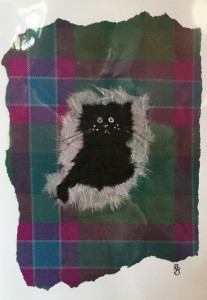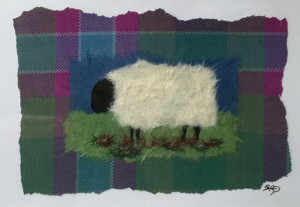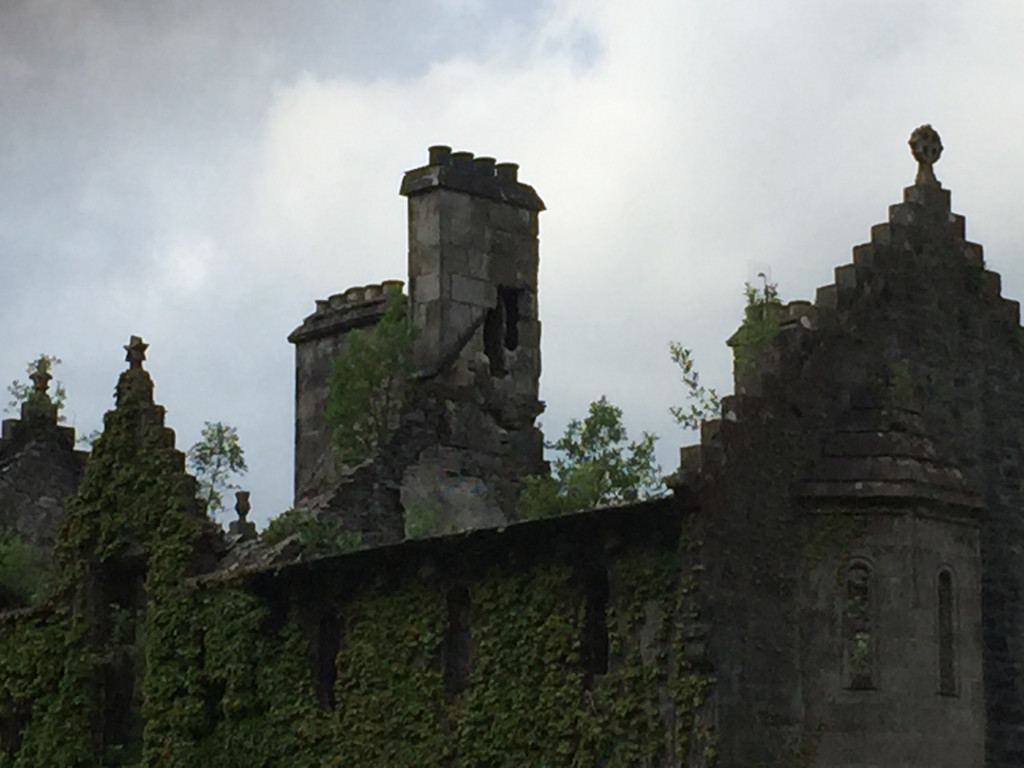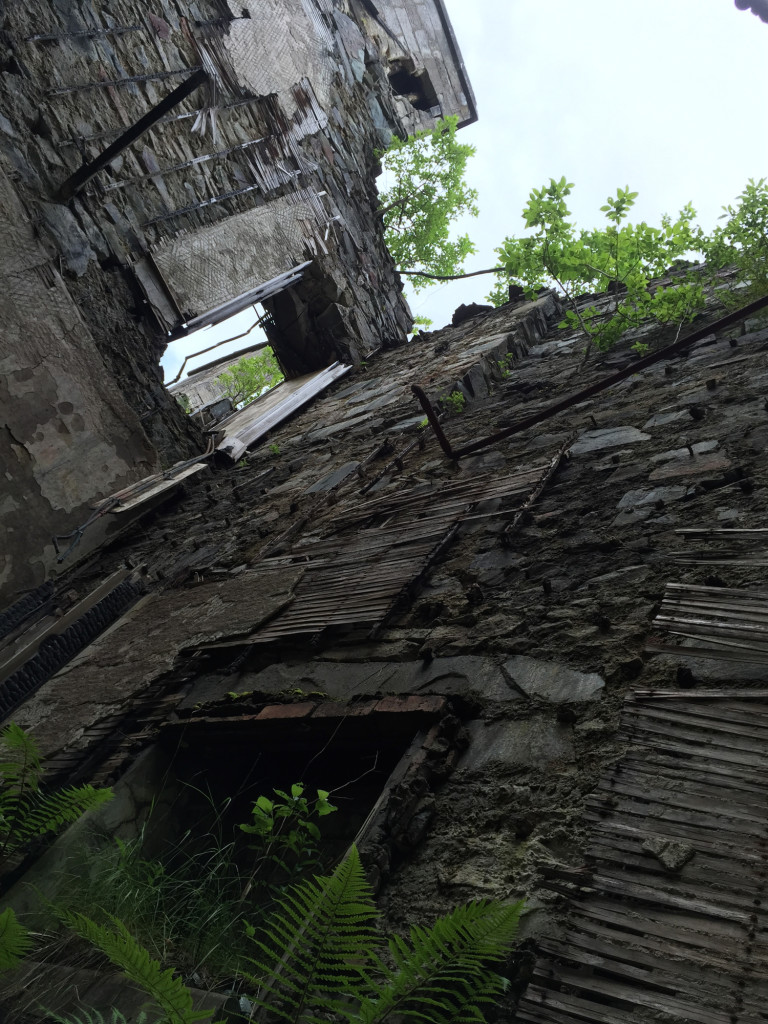Stuck for a gift for the man who has everything? Can’t think of what to buy your teenage nephew? Mental block about a gorgeous Christmas present for your mother? ScottishLaird.co.uk has the answer – of course it does!
Category: Recommended
Nous sommes unis: By their guns become not their gun #paris #beirut
By their guns become not their gun,
by their killing hasten not their death,
by their hate, forget not the Love
which should infuse every breath:
so embrace them for they are unaware
of the mud they smear upon their souls;
embrace them so that they might learn
only Love is the answer to their call.
Smartphone Cases for Lairds & Ladies: #DunansRising tartan, #DunansCastle and Lechadhu insignia on the back of #yourphone
Delighted to announce another product now launched on the ScottishLaird.co.uk website: smartphone cases for iPhone 5 onwards and the Samsung Note range.
We’ve presently four designs to choose from, the plain Dunans Rising Tartan, the Lord’s/Laird’s/Lady’s phone (on tartan), the Spring view of Dunans Castle (taken by myself in 2005) and Jean Donaldson’s wonderful shot of the insignia which graces the curtain wall at Dunans.
We think they are all fabby, hope you do too! You’ll find them all here.
@what3words: Coordinates for #DunansCastle in three words, include fragment.curly.firebird and cups.domestic.inventors
Postcodes and GPS coordinates are, let’s face it, complex and easy to get wrong – particularly when you are trying to remember them to put them into your satnav / maps / google maps. The What3words app is the answer. I know without looking at the title of this post that the coordinate for the drivehead at Dunans is fragment.curly.firebird. The postcode covers at least three other houses and the GPS, well, I am just not sure. But a mirror image of a phoenix with curly feathers ripped in half, means that whenever someone needs an accurate location, I have it to hand, immediately… Similarly, I have a visual image of a bunch of guys in lab coats, in a kitchen, drinking tea back to front … genius, particularly as they’re in the castle when they are doing it.
With 40,000 words and consequently 57 trillion combinations, the world can be covered in three metre squares, or the size of the average room. And it is all so memorable. So for example here’s one I particularly love which identifies a place I often have to meet newcomers to the glen in – flukes.reports.unicorns. However, I am not sure the committee would approve – but then I do have a mental image of a narwhal reading a paper inside out?!
For balance I should just add sheep.conga.pleaser … !
It’s my birthday today, and for my #birthdaypresent I’d like you to watch this #TED talk from Allan Savory – it might just change the way you think about farming and climate change forever!
OK so it is about desertification, not damp and windy old Europe (as in the picture above), but actually, the principles he talks about, and the possible benefits are extraordinary.
As I watched and listened I couldn’t help but think of unproductive land all over Argyll which might benefit from this idea of mob-grazing. Imagine hill farmers being able to increase their stocking levels by over 100%, and decrease their inputs as well, and get rid of the rashes, and improve the soil structure …
And of course I love the fact that by improving farming techniques we end up bring our carbon footprint right down and thereby saving the planet too. Extraordinary.
And here’s the transcript:
00:12The most massive tsunami perfect storm is bearing down upon us. This perfect storm is mounting a grim reality, increasingly grim reality, and we are facing that reality with the full belief that we can solve our problems with technology, and that’s very understandable. Now, this perfect storm that we are facing is the result of our rising population, rising towards 10 billion people, land that is turning to desert, and, of course, climate change.
01:00Now there’s no question about it at all: we will only solve the problem of replacing fossil fuels with technology. But fossil fuels, carbon — coal and gas — are by no means the only thing that is causing climate change.
01:18Desertification is a fancy word for land that is turning to desert, and this happens only when we create too much bare ground. There’s no other cause. And I intend to focus on most of the world’s land that is turning to desert.
01:38But I have for you a very simple message that offers more hope than you can imagine. We have environments where humidity is guaranteed throughout the year. On those, it is almost impossible to create vast areas of bare ground. No matter what you do, nature covers it up so quickly. And we have environments where we have months of humidity followed by months of dryness, and that is where desertification is occurring. Fortunately, with space technology now, we can look at it from space, and when we do, you can see the proportions fairly well. Generally, what you see in green is not desertifying,and what you see in brown is, and these are by far the greatest areas of the Earth. About two thirds, I would guess, of the world is desertifying.
02:34I took this picture in the Tihamah Desert while 25 millimeters — that’s an inch of rain — was falling. Think of it in terms of drums of water, each containing 200 liters. Over 1,000 drums of water fell on every hectare of that land that day. The next day, the land looked like this. Where had that water gone? Some of it ran off as flooding, but most of the water that soaked into the soil simply evaporated out again,exactly as it does in your garden if you leave the soil uncovered. Now, because the fate of water and carbon are tied to soil organic matter, when we damage soils, you give off carbon. Carbon goes back to the atmosphere.
03:26Now you’re told over and over, repeatedly, that desertification is only occurring in arid and semi-arid areas of the world, and that tall grasslands like this one in high rainfall are of no consequence. But if you do not look at grasslands but look down into them, you find that most of the soil in that grassland that you’ve just seen is bare and covered with a crust of algae, leading to increased runoff and evaporation.That is the cancer of desertification that we do not recognize till its terminal form.
04:07Now we know that desertification is caused by livestock, mostly cattle, sheep and goats, overgrazing the plants, leaving the soil bare and giving off methane. Almost everybody knows this, from nobel laureates to golf caddies, or was taught it, as I was. Now, the environments like you see here, dusty environments in Africa where I grew up, and I loved wildlife, and so I grew up hating livestock because of the damage they were doing. And then my university education as an ecologist reinforced my beliefs.
04:51Well, I have news for you. We were once just as certain that the world was flat. We were wrong then, and we are wrong again. And I want to invite you now to come along on my journey of reeducation and discovery.
05:14When I was a young man, a young biologist in Africa, I was involved in setting aside marvelous areas as future national parks. Now no sooner — this was in the 1950s — and no sooner did we remove the hunting, drum-beating people to protect the animals, than the land began to deteriorate, as you see in this park that we formed. Now, no livestock were involved, but suspecting that we had too many elephants now, I did the research and I proved we had too many, and I recommended that we would have to reduce their numbers and bring them down to a level that the land could sustain. Now, that was a terrible decision for me to have to make, and it was political dynamite, frankly. So our government formed a team of experts to evaluate my research. They did. They agreed with me, and over the following years,we shot 40,000 elephants to try to stop the damage. And it got worse, not better. Loving elephants as I do, that was the saddest and greatest blunder of my life, and I will carry that to my grave. One good thing did come out of it. It made me absolutely determined to devote my life to finding solutions.
06:47When I came to the United States, I got a shock, to find national parks like this one desertifying as badly as anything in Africa. And there’d been no livestock on this land for over 70 years. And I found that American scientists had no explanation for this except that it is arid and natural. So I then began lookingat all the research plots I could over the whole of the Western United States where cattle had been removed to prove that it would stop desertification, but I found the opposite, as we see on this research station, where this grassland that was green in 1961, by 2002 had changed to that situation. And the authors of the position paper on climate change from which I obtained these pictures attribute this change to “unknown processes.”
07:52Clearly, we have never understood what is causing desertification, which has destroyed many civilizations and now threatens us globally. We have never understood it. Take one square meter of soiland make it bare like this is down here, and I promise you, you will find it much colder at dawn and much hotter at midday than that same piece of ground if it’s just covered with litter, plant litter. You have changed the microclimate. Now, by the time you are doing that and increasing greatly the percentage of bare ground on more than half the world’s land, you are changing macroclimate. But we have just simply not understood why was it beginning to happen 10,000 years ago? Why has it accelerated lately? We had no understanding of that.
08:52What we had failed to understand was that these seasonal humidity environments of the world, the soil and the vegetation developed with very large numbers of grazing animals, an

d that these grazing animalsdeveloped with ferocious pack-hunting predators. Now, the main defense against pack-hunting predators is to get into herds, and the larger the herd, the safer the individuals. Now, large herds dung and urinate all over their own food, and they have to keep moving, and it was that movement that prevented the overgrazing of plants, while the periodic trampling ensured good cover of the soil, as we see where a herd has passed.
09:47This picture is a typical seasonal grassland. It has just come through four months of rain, and it’s now going into eight months of dry season. And watch the change as it goes into this long dry season. Now, all of that grass you see aboveground has to decay biologically before the next growing season, and if it doesn’t, the grassland and the soil begin to die. Now, if it does not decay biologically, it shifts to oxidation, which is a very slow process, and this smothers and kills grasses, leading to a shift to woody vegetation and bare soil, releasing carbon. To prevent that, we have traditionally used fire. But fire also leaves the soil bare, releasing carbon, and worse than that, burning one hectare of grassland gives off more, and more damaging, pollutants than 6,000 cars. And we are burning in Africa, every single year,more than one billion hectares of grasslands, and almost nobody is talking about it. We justify the burning, as scientists, because it does remove the dead material and it allows the plants to grow.
11:20Now, looking at this grassland of ours that has gone dry, what could we do to keep that healthy? And bear in mind, I’m talking of most of the world’s land now. Okay? We cannot reduce animal numbers to rest it more without causing desertification and climate change. We cannot burn it without causingdesertification and climate change. What are we going to do? There is only one option, I’ll repeat to you, only one option left to climatologists and scientists, and that is to do the unthinkable, and to use livestock, bunched and moving, as a proxy for former herds and predators, and mimic nature. There is no other alternative left to mankind.
12:15So let’s do that. So on this bit of grassland, we’ll do it, but just in the foreground. We’ll impact it very heavily with cattle to mimic nature, and we’ve done so, and look at that. All of that grass is now covering the soil as dung, urine and litter or mulch, as every one of the gardeners amongst you would understand,and that soil is ready to absorb and hold the rain, to store carbon, and to break down methane. And we did that, without using fire to damage the soil, and the plants are free to grow.
12:55When I first realized that we had no option as scientists but to use much-vilified livestock to address climate change and desertification, I was faced with a real dilemma. How were we to do it? We’d had 10,000 years of extremely knowledgeable pastoralists bunching and moving their animals, but they had created the great manmade deserts of the world. Then we’d had 100 years of modern rain science, and that had accelerated desertification, as we first discovered in Africa and then confirmed in the United States, and as you see in this picture of land managed by the federal government. Clearly more was needed than bunching and moving the animals, and humans, over thousands of years, had never been able to deal with nature’s complexity. But we biologists and ecologists had never tackled anything as complex as this. So rather than reinvent the wheel, I began studying other professions to see if anybody had. And I found there were planning techniques that I could take and adapt to our biological need, and from those I developed what we call holistic management and planned grazing, a planning process, and that does address all of nature’s complexity and our social, environmental, economic complexity.
14:27Today, we have young women like this one teaching villages in Africa how to put their animals together into larger herds, plan their grazing to mimic nature, and where we have them hold their animals overnight — we run them in a predator-friendly manner, because we have a lot of lands, and so on — and where they do this and hold them overnight to prepare the crop fields, we are getting very great increases in crop yield as well.
14:54Let’s look at some results. This is land close to land that we manage in Zimbabwe. It has just come through four months of very good rains it got that year, and it’s going into the long dry season. But as you can see, all of that rain, almost of all it, has evaporated from the soil surface. Their river is dry despite the rain just having ended, and we have 150,000 people on almost permanent food aid. Now let’s go to our land nearby on the same day, with the same rainfall, and look at that. Our river is flowing and healthy and clean. It’s fine. The production of grass, shrubs, trees, wildlife, everything is now more productive,and we have virtually no fear of dry years. And we did that by increasing the cattle and goats 400 percent, planning the grazing to mimic nature and integrate them with all the elephants, buffalo, giraffe and other animals that we have. But before we began, our land looked like that. This site was bare and eroding for over 30 years regardless of what rain we got. Okay? Watch the marked tree and see the change as we use livestock to mimic nature. This was another site where it had been bare and eroding,and at the base of the marked small tree, we had lost over 30 centimeters of soil. Okay? And again, watch the change just using livestock to mimic nature. And there are fallen trees in there now, because the better land is now attracting elephants, etc. This land in Mexico was in terrible condition, and I’ve had to mark the hill because the change is so profound.
16:59(Applause)
17:06I began helping a family in the Karoo Desert in the 1970s turn the desert that you see on the right thereback to grassland, and thankfully, now their grandchildren are on the land with hope for the future. And look at the amazing change in this one, where that gully has completely healed using nothing but livestock mimicking nature, and once more, we have the third generation of that family on that land with their flag still flying.
17:39The vast grasslands of Patagonia are turning to desert as you see here. The man in the middle is an Argentinian researcher, and he has documented the steady decline of that land over the years as they kept reducing sheep numbers. They put 25,000 sheep in one flock, really mimicking nature now with planned grazing, and they have documented a 50-percent increase in the production of the land in the first year.
18:10We now have in the violent Horn of Africa pastoralists planning their grazing to mimic nature and openly saying it is the only hope they have of saving their families and saving their culture. Ninety-five percent of that land can only feed people from animals.
18:29I remind you that I am talking about most of the world’s land here that controls our fate, including the most violent region of the world, where only animals can feed people from about 95 percent of the land.What we are doing globally is causing climate change as much as, I believe, fossil fuels, and maybe more than fossil fuels. But worse than that, it is causing hunger, poverty, violence, social breakdown and war,and as I am talking to you, millions of men, women and children are suffering and dying. And if this continues, we are unlikely to be able to stop the climate changing, even after we have eliminated the use of fossil fuels.
19:23I believe I’ve shown you how we can work with nature at very low cost to reverse all this. We are already doing so on about 15 million hectares on five continents, and people who understand far more about carbon than I do calculate that, for illustrative purposes, if we do what I am showing you here, we can take enough carbon out of the atmosphere and safely store it in the grassland soils for thousands of years, and if we just do that on about half the world’s grasslands that I’ve shown you, we can take us back to pre-industrial levels, while feeding people. I can think of almost nothing that offers more hope for our planet, for your children, and their children, and all of humanity.
20:23Thank you.
20:27(Applause) Thank you. (Applause)
20:48Thank you, Chris.
20:50Chris Anderson: Thank you. I have, and I’m sure everyone here has, A) a hundred questions, B) wants to hug you. I’m just going to ask you one quick question. When you first start this and you bring in a flock of animals, it’s desert. What do they eat? How does that part work? How do you start?
21:09Allan Savory: Well, we have done this for a long time, and the only time we have ever had to provide any feed is during mine reclamation, where it’s 100 percent bare. But many years ago, we took the worst land in Zimbabwe, where I offered a £5 note in a hundred-mile drive if somebody could find one grass in a hundred-mile drive, and on that, we trebled the stocking rate, the number of animals, in the first year with no feeding, just by the movement, mimicking nature, and using a sigmoid curve, that principle. It’s a little bit technical to explain here, but just that.
21:48CA: Well, I would love to — I mean, this such an interesting and important idea. The best people on our blog are going to come and talk to you and try and — I want to get more on this that we could share along with the talk.AS: Wonderful.
21:59CA: That is an astonishing talk, truly an astonishing talk, and I think you heard that we all are cheering you on your way. Thank you so much.AS: Well, thank you. Thank you. Thank you, Chris.
22:09(Applause)
Bloomin’ Marvellous: Gorgeous Tearaway Artworks Launched at ScottishLaird.co.uk for @DunansCastle
It’s Christmas! A festive Pantos-on-the-Go poster for @twtc which I’ve just designed …
The poster uses assets I’ve developed for TWTC over the last 5 years eg. the white rabbit, as well as the cracked font. The rest of it is layered vector graphics in Illustrator… I think it looks suitably festive …
I can’t wait to see Rebecca Bloom as Sno! If you like the look of one of these marvellous pantos-on-the-go, please contact Alana at TWTC.
If you like the look of one of these marvellous pantos-on-the-go, please contact Alana at TWTC.
Congratulations to the ScottishLaird Team: #DunansCastle is a Groupon Local Star in Poland!
This is really testament to the hard work and good humour of our ScottishLaird team, big congratulations to Jean Donaldson (Powanmedia) and Colin Steedman who work tirelessly to make our promotions to Europe and beyond the success they are!
Watch out for new Scottish Laird promotions for Groupon UK and Ireland before the month is out!
In the meantime, we’ll let the email we just received speak for itself(!):
Journey to the Heart of #DunansCastle: The Old Library
We’ve recently heard crashes and rumbles from the old building, and so today I set myself the task of finding out what was going on. The obvious culprit was the chimney stack at the back of the castle. But the small apertures now appearing, while a problem for the chimney stack itself, would not a cacophony make.
As you’ll know we are presently working on the plans for the building, and much of the internal structure will be removed, so our only real concern is if the exterior is compromised. Externally it looks fine, but a fuller inspection was indicated.
So I went inside. To find the old library filled to head height with rubble, joists, plaster and shelving. I should add here, that I have an ulterior motive to this scouting about: at some point in the next week or so, I’ll be taking our minidigger into the structure to begin the mammoth task of clearing the castle out – the sort of job all men love, combining a good tidy up, including bonfire, with a good dose of danger!
 As you can see from the photo above, the shelving is still in situ, but the blackened joists from the floors above have now all fallen in.
As you can see from the photo above, the shelving is still in situ, but the blackened joists from the floors above have now all fallen in.
 When you look up you begin to see how dangerous this structure is.
When you look up you begin to see how dangerous this structure is.
At the very top, in the chimney, is the double hole showing the side-by-side flues. Below that two door apertures, with spindly floor joists between – these would have been the joists which held up the floor to the chapel.
Below the first storey door, you then find the tops of the library shelves, which swiftly descend into all the materials which have fallen into this compartment of the castle both during the fire and after. Slate, plaster, lath, and stone is all visible and expected. The bracken and saplings are also present throughout the ruin.
What I didn’t expect (and therefore didn’t get a photo of) were the trio of bumblebees buzzing about the wall to the right of this picture – see the photo below which gives an idea of the scale of the internal structure, and an idea of the structures sheer immovability.
The apertures into the flues are very visible at the top of this picture. The flues are vulnerable in this way because of the weathering action of rain combined with the sulphur and other volatiles from years of coal and wood burning.
I’ll post photos from another ‘room’ shortly.
*With apologies to Joseph Conrad.
Dunans Rising Notebooks: Now in our online store!
Gorgeous Green and Purple notebooks with a silver Dunans Rising logo have just been added to our online store. Find them here!




















